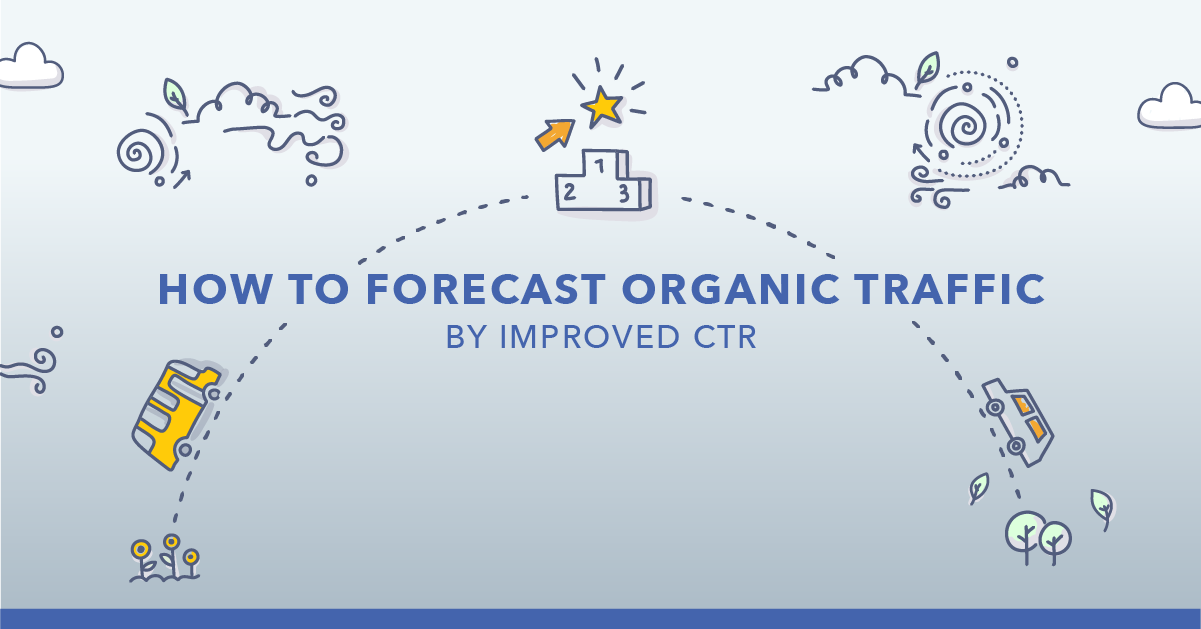Struggling to determine which keywords to prioritize? It's a common SEO challenge. You've got a pile of keywords, but which ones should you target first?
Well, the most common approach is to focus on search volume with the idea being that high-volume keywords will provide the best opportunities. But search volume alone won't tell you how tough it is to rank for a search query in organic search results.
Enter keyword difficulty – a critical metric to determine your keyword opportunities and prioritize SEO efforts. In this post, we'll break down what it is (and what it's not) and walk through a simple process to evaluate your chances of ranking for target keywords.
Let's dive in!
Table of Contents:
-
The Difference Between Keyword Difficulty vs. Keyword Competition
-
The Importance of Considering Keyword Difficulty When Conducting Keyword Research
-
The Key to Accurately Determining Keyword Difficulty: Page Strength
-
Taking a Complete Look at Keyword Difficulty with seoClarity
What Is Keyword Difficulty?
Keyword difficulty is an SEO metric used to assess how challenging it is to rank for a specific keyword on search engines like Google.
These scores are typically presented as a numerical value or a scale (e.g., low, medium, high, or from 0-100) to indicate how hard or easy it is to rank for a particular keyword.
SEO's use keyword difficulty scores to prioritize their keywords or topics, focusing on keywords with manageable difficulty levels to improve their chances of ranking higher in search engine results.
The Difference Between Keyword Difficulty vs. Keyword Competition
Keyword difficulty is not a new concept to SEOs. It’s been around in various forms for a good part of the last ten years.
It is, however, one of the most misunderstood aspects of SEO.
For one, it’s often confused with keyword competition, a term you’ll find in the Google Keyword Planner. Although both terms seem similar, they look at two completely different aspects of your target phrases.
- Keyword Competitiveness: relates to paid terms and indicates the level of competition you may find when bidding for a keyword.
- Keyword Difficulty: measures your likelihood of ranking for a particular phrase in the organic search results.
The Importance of Considering Keyword Difficulty When Conducting Keyword Research
SEO teams typically prioritize content opportunities based on two main factors: How much demand a topic has and how hard is it to rank for it based on the competition.
So how do you know whether you have the potential to rank for a given keyword?
This is where keyword difficulty scores come into play.
When optimizing your site for a new topic area, it’s typically most effective to go after less difficult keywords that have adequate search volume. These are often referred to as “low hanging fruit” since they are relatively easy ranking opportunities that have the potential to quickly drive traffic to your site.
Focusing on low-hanging fruit keywords can also have long-term advantages. When you optimize content around a topic's longer tail keywords and properly interlink it, you'll gradually form a topic cluster around that subject.
As time passes, search engines might recognize your website as an authoritative source on that topic, potentially improving your chances of ranking for more competitive, high-search-volume keywords.
What Is a "Good" Keyword Difficulty Score?
A good keyword difficulty score varies depending on your specific SEO strategy and the competitive landscape in your niche. However, as a general guideline:
-
Low Difficulty (0-30): These are the easiest keywords to rank for. They typically have lower search volumes, but they are ideal for new websites or when targeting long-tail keywords.
-
Medium Difficulty (31-60): These keywords are moderately competitive. They often have a balance between search volume and competition. Established websites with some authority can target these effectively.
-
High Difficulty (61-100): These are the most competitive keywords. They usually have high search volumes and are dominated by authoritative websites. Targeting high-difficulty keywords may require significant time, resources, and a well-established online presence.
Ultimately, a good keyword difficulty score for you depends on your website's authority, resources, and your overall SEO strategy. It's essential to strike a balance between targeting achievable keywords and aiming for those that offer substantial traffic potential.
How to Measure Keyword Difficulty: Factors to Consider
Here’s a quick process to help you determine which keywords to prioritize based on ranking potential. It relies on evaluating target keywords against the following criteria:
- Search Volume – This metric enables you to determine the actual demand for a keyword. It is helpful to discover the audience’s interest and the keyword’s potential.
- Search intent – Evaluate whether the user intent of that query matches what you want to optimize or create the page content to target.
- Cost per Click – Look at the keyword from the business perspective. Ask yourself, "what if the PPC team invested in the keyword, what would the investment, and the potential return be like?" Answering this question will help you evaluate the commercial potential and ROI behind your SEO campaign.
- The SERP Signature – Are there any universal search types or features that you could target with the keyword? That could be images, video, featured snippet, etc.
- Competitors ranking for the phrase – if the sites you typically compete with do not rank for the keyword, do you have the chance to get there? Or, do you want to even be there? More often than not, the answer might be no.
- Content on a page – Evaluate the top-ranking content to see the base information required to get on page one. Does it match the intent you have for your asset?
With these criteria, you can figure out your chances of ranking and the effort required to do so.
But conducting the process manually is cumbersome at best. Plus, you could never evaluate the entire scope of ranking factors to determine how difficult it would be to rank for that query.
That's why keyword difficulty scores are so helpful. That being said, not all keyword difficulty tools are created equal when it comes to providing an accurate understanding of how hard it is to rank for your target keywords. This leads us to...
The Problem With Most Keyword Difficulty Tools
Many keyword difficulty checkers exist, but there isn't a standardized approach to calculate keyword difficulty.
Various SEO tools have implemented individual approaches to determining the difficulty of a keyword, resulting in each tool delivering a different keyword difficulty score.
- MOZ, for example, uses a combination of page authority and domain authority (which, in turn, is based on the number of referring domains.)
- Semrush determines keyword difficulty in three steps: analyzing the SERP to gauge the top 10 pages' strength (based on factors like referring domains, follow/nofollow link ratios, and domain authority), analyzing keyword characteristics like search volume and SERP Features, and adjusting scores based on regional databases to avoid outliers. However, keep in mind that 2/3 of their score is still just based on backlinks.
- Ahrefs counts the number of referring domains and bases the score on how many links you’d need to rank for a keyword.
(Keyword difficulty score in Ahrefs)
The challenge with those approaches, however, is that they rely on backlinks as the measure of the search engine results page (SERP) competitiveness.
Unfortunately, backlinks (or any other metrics that base their score on links) are neither the only nor the strongest factor in determining a page’s ranking potential. In fact, links aren't even a top-three ranking factor anymore.
While this approach may have worked in the past, we see the influence of links on rankings diminishing more and more each year, making traditional keyword difficulty scores increasingly inaccurate.
According to Google Search Advocate John Mueller, the strength of backlinks as a ranking factor is expected to continue to decrease over time. During a live session at Brighton SEO, Mueller stated:
Well, it’s something where I imagine, over time, the weight on the links at some point will drop off a little bit as we can figure out a little bit better how the content fits in within the context of the whole web.
Today, Google and other search engines look at far more metrics than just links when evaluating how to rank a page. To determine how difficult it would be for your site to rank, you need to do the same.
What you must figure out, specifically, is how strong your page needs to be to rank.
The Key to Accurately Determining Keyword Difficulty: Page Strength
seoClarity's Page Strength metric encapsulates all ranking factors. It includes everything that Google looks at when evaluating how to rank a page to help estimate how difficult it is to rank for the traffic positions (rankings that can generate a solid organic click-through rate).
To calculate page strength, we use all the data available in the seoClarity platform. The Research Grid, for example, is the world's largest database with 500 million keywords. ClarityGrid, on the other hand, collects all the data about a URL. It knows who links to it, how many keywords it ranks for, where it ranks, and its historical behavior in the SERP.
Its premise is simple – to know whether you could rank for a keyword, you need to know how strong your page is to Google, and how it compares with the top-ranking content.
And its role is to help you identify how difficult a keyword will be to rank for. Because, to understand keyword difficulty, you must first understand the page strength of the top-ranking content. If those pages are significantly stronger than yours, you're going to have a hard time ranking for that keyword.
Dive into the extensive research we conducted to verify our Page Strength Score's correlation to SEO rankings.
Taking a Complete Look at Keyword Difficulty with seoClarity
Over the course of two years, we evaluated the factors that make pages strong enough to rank to formulate our innovative Keyword Difficulty value.
Keyword Difficulty in seoClarity uses an entirely new way of understanding how difficult it is to rank in the traffic positions for a keyword.
Incorporating a robust machine learning algorithm, the feature evaluates billions of data points from our entire Research Grid dataset, from a topical authority, rankings, backlinks, search volume, trends, volatility, and more to determine a keyword difficulty score for each keyword.
(Keyword difficulty score in seoClarity)
As you can see, the system clearly tells you whether a keyword would be easy, medium, or hard for you to obtain.
Approaching keyword difficulty this way frees you from trying to determine the value behind 0.5- or 5-point difference, making it easy to understand what’s required of you to rank.



.png?width=140&name=Untitled%20design%20(10).png)



Comments
Currently, there are no comments. Be the first to post one!